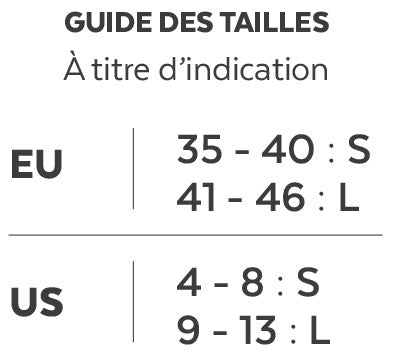PODERM® Hallux Valgus - Plantar pain Double Protection offers shock-absorbing protection for the hallux valgus deformity zone and the sole of the foot. This innovative solution provides immediate pain relief, reduces friction, distributes pressure and absorbs micro-shocks.
Suitable for all types of footwear, it is available in two sizes for a perfect fit (see size guide). Deformity of the first metatarsophalangeal joint (Hallux Valgus) causes imbalance in the forefoot and excessive pressure on the sole of the foot. It is therefore crucial to protect these two areas.
PODERM® Double Protection protects the sole of the foot and the joints, providing instant pain relief. The inner cushion provides immediate comfort by soothing the area while preventing and reducing calluses.
This medical device is a regulated health product and carries the CE mark. Ask your chiropodist or pharmacist for advice and read the instructions carefully before use. Swiss Footcare Laboratories. 10/2024.





